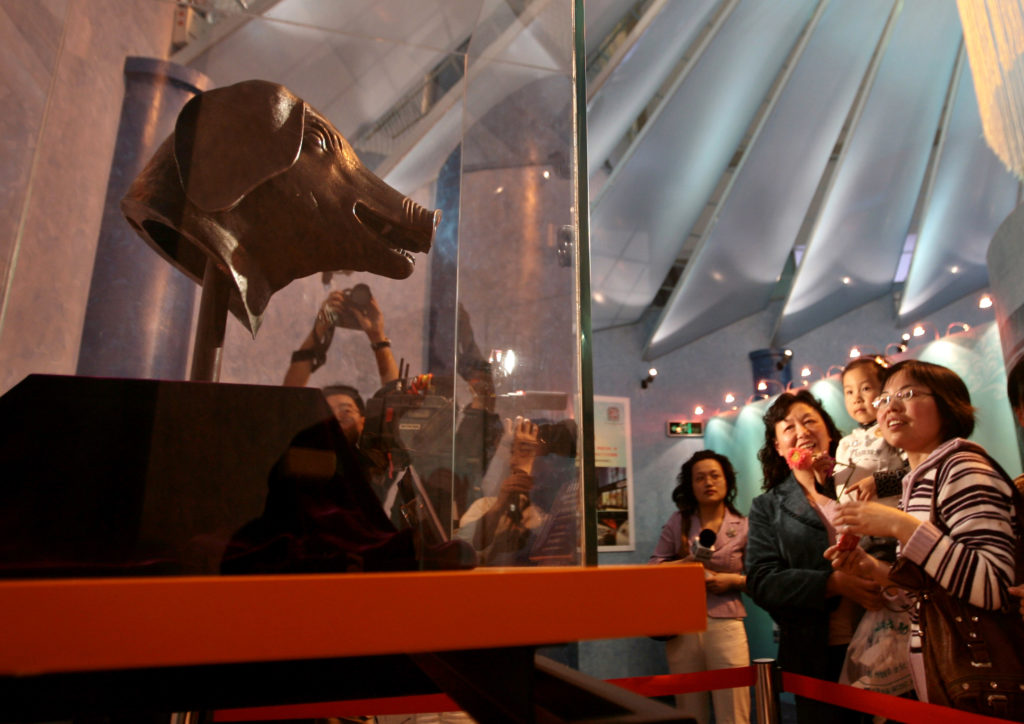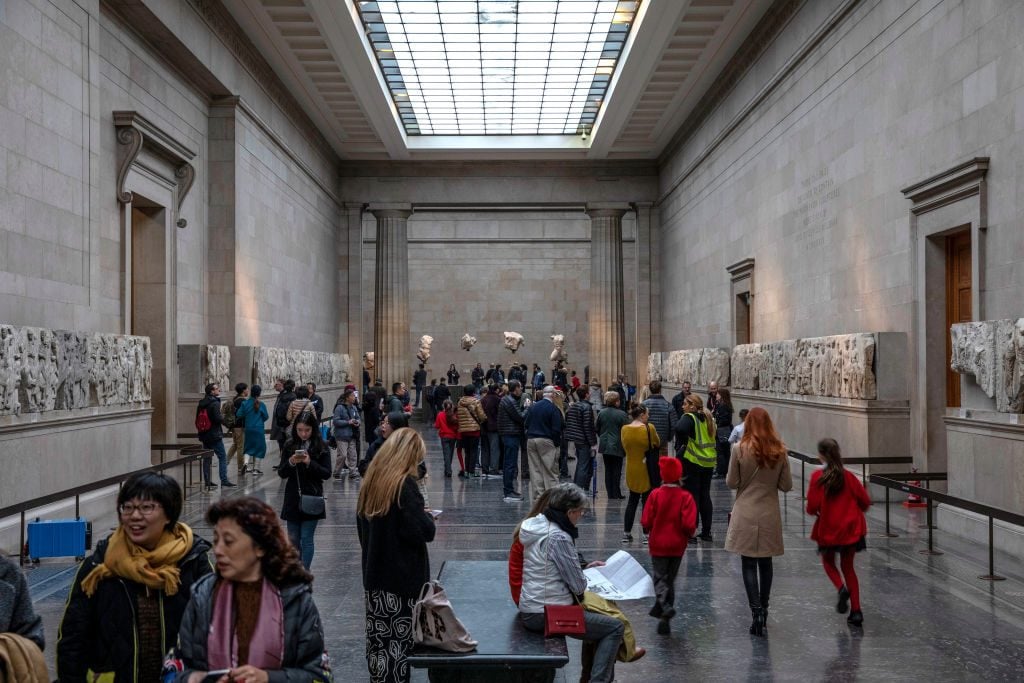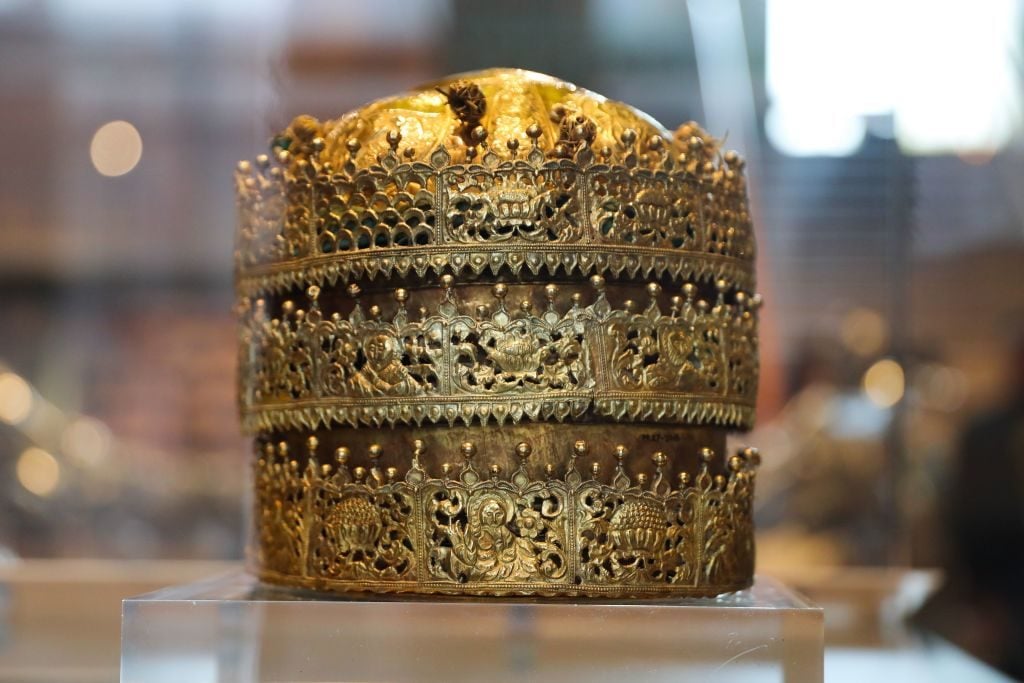Books
How Billionaires Are Quietly Buying Up and Returning China’s Looted Cultural Heritage
Read an excerpt from Institute of Art and Law director Alexander Herman's book "Restitution: The Return of Cultural Artifacts."

Read an excerpt from Institute of Art and Law director Alexander Herman's book "Restitution: The Return of Cultural Artifacts."

Alexander Herman

As a global superpower, China has been assertive in its quest to repair the loss caused during what it calls its “century of shame” (c.1850–c.1950). The nadir of that woeful period was the sacking of the Summer Palace outside Peking in 1860 by French and British troops. The retrieval of items taken during the attack has become a vital part of China’s resurgence on the global scene. While thousands of objects were looted—from huge porcelain vases to miniscule jade figurines—the most emblematic were undoubtedly the 12 bronze animal heads which had been part of an 18th-century fountain representing the symbols of the Chinese Zodiac (rat, ox, tiger, rabbit, horse, and so forth) designed for the Qing Emperor by a visiting Italian. They have come to hold a special place in the country’s collective memory of this traumatic event.
Unlike many of the other Summer Palace items, the Zodiac heads did not end up in Western museums. Instead, they were kept by soldiers and passed down, like so many spoils of war, along the different branches of family trees. More recently, every few years or so, one would appear on the international art market. The response from China has been telling. Rather than protest virulently or seek redress through the courts, it sits back and waits. The heads that have come to market have then been purchased by the country’s esteemed “friends,” usually businessmen who acquire the work and then turn it into a donation to the state. These high rollers, like casino magnate Stanley Ho or Christie’s owner François Pinault, are looking to position themselves well with the regime and, regardless of their motives, it seems to have borne fruit. Seven of the 12 heads are now back in China, on display at museums in and around Beijing. The other five are either still in private collections or have been lost to the sands of time.
This seems a reasonable strategy for a country with over 300 billionaires that can rely on generous donations of this nature. But for poorer countries in South Asia, Africa, South America, and Oceania this approach would be a pipe dream. Not everyone can buy back heritage—or have others buy it back in their stead. China is in a unique position: having once been a victim of European aggression it now basks in self-confidence, both financially (it has the world’s second largest economy) and politically (it has a permanent seat on the U.N. Security Council).

Sections of the Parthenon Marbles at the British Museum. Photo by Dan Kitwood/Getty Images.
China also seems to be toying with the role of champion of restitution beyond its own borders. In November 2019, President Xi Jinping visited Greece and the question of the Parthenon Marbles inevitably arose. Having been asked by the Greek President for help in the “battle” to return the sculptures, Xi said he “totally agreed” they were held illegally at the British Museum, pledging support for the return campaign. “Not only will you have my support,” Xi announced to everyone’s surprise, “we should work together. Because we have a lot of our own relics abroad, and we are trying as much as we can to bring these back home as soon as possible.” This was an unprecedented statement, ably striking a sympathetic chord with his hosts, while seeking out parallels with this particular Chinese predicament.
In more concrete terms, China financed a €35 million museum in Dakar, Senegal—the Museum of Black Civilizations—meant to serve as both beacon of African culture and recipient of restituted cultural property. Chinese Culture Minister Luo Shugang was present at the ribbon cutting ceremony for the museum in December 2018. The displays include a number of Benin Bronzes that had been hidden from covetous British soldiers during the 1897 attack, as well as the sword and scabbard of Omar Tall recently returned from France. China’s financial backing made the institution’s construction possible. But China would never have “invested” (it is unclear whether this might in fact be a loan) had it not seen an opportunity—economic perhaps, but also one that coincided with its convictions about recovering pieces of a plundered past.
When it comes to restitution of this nature, we may indeed be approaching a historic turning point. Presidents of powerful countries appear to be seeking to make amends for the crimes of the past. Restitution has traditionally been the refrain of the powerless: countries like Greece, Italy, Poland, Nigeria, or Mali trying in vain to recover looted elements of their heritage held in foreign museums. But now we have a former colonial power (France) beginning to make voluntary returns, keenly aware that the rest of Europe is taking notes, while a global superpower (China) sets out to recover its own heritage, while also beginning to publicly position itself as the champion of the cause around the world. With these two countries in control, the future may indeed be very different.

A crown, made in Ethiopia around 1740, that was taken by British troops at the siege of Magdala (Mek’dala) in 1868. Photo by Daniel Leal-Olivas/AFP via Getty Images.
Conversations about restitution are also playing out in quieter, more cooperative forms. This usually involves something short of full and permanent return. There can be modulations, ways of using restitution—or a claim for restitution—as the basis for bringing countries at odds closer together, both culturally and geopolitically. In this case, we can consider the actions of Ethiopia in recent years. Like China, Ethiopia is also seeking to recover artifacts taken by force over 150 years ago. In Ethiopia’s case these are the objects looted by the British in 1868 at Maqdala. Some are held at the Victoria & Albert Museum, while others are located at the British Museum and elsewhere, with 350 religious manuscripts in the collection of the British Library.
Unlike with the Parthenon Marbles, here the British have been relatively willing to relinquish certain pieces of loot over the years: one of two copies of the great Kebra Nagast manuscript was sent back to Abyssinia on the order of Queen Victoria in 1872 (a mere four years after it had been seized); a silver crown was sent as a diplomatic gift in 1925; and a royal cap and seal were presented to Emperor Haile Selassie in 1965. More recently, the British Library signed a Memorandum of Understanding with the Ethiopian Ministry of Culture and Tourism, which prioritized the digitization of the Maqdala manuscripts. Library representatives traveled to Addis Ababa in 2019 to hand over a six-terabyte hard drive of over 100 digitized manuscript images to be deposited at Ethiopia’s National Library. This would help provide local researchers access to ultra-high-resolution images, far more practical in many ways than the delicate and faded originals, which remain in the British Library’s stores. The costs of reproduction were covered by a “Heritage Made Digital” grant at the library.
Some consider these piecemeal or “virtual” returns unsatisfactory. Of course, the vast majority of the objects taken at Maqdala remain in Britain, but as a result of the recent initiative, relationships have vastly improved. Following decades of dictatorship and famine, Ethiopia is trying to turn a page both domestically and internationally. Prime Minister Abiy Ahmed helped end a 20-year stalemate with neighboring Eritrea, for which he received the Nobel Peace Prize in 2019. The country has also run its first fully democratic election. But the government has faced opposition from within, which erupted into conflict with the Tigray People’s Liberation Front, an armed resistance group from a northern province, in late 2020. As a result, Ethiopia is in a particularly vulnerable position at what appears to be a crucial point in its modern history. As such its connections with the West, especially with the U.K., have become especially important. It might need more than anything to affirm these links through exchange and cooperation, or risk drifting further towards other spheres of influence, like those of China and Russia. At the same time, it seeks to cure its historical trauma with honor and dignity.
None of this means that true restitution is necessarily off the table. In the case of Ethiopia, the claim for full and permanent return of the Maqdala treasures remains outstanding. When V&A director Tristram Hunt floated the idea of lending back the objects from its collection on a long-term basis in 2018, the Ethiopian Ambassador’s response was unequivocal: his country sought nothing less than full-scale return. And when the British Library representatives handed over the hard drive of images in 2019, an appreciative Ethiopian Minister of Culture nevertheless reiterated her country’s claim to the complete restitution of the manuscripts. And so, even when cooperation has occurred, it is almost always upon the understanding (by the claimant) that this solution remains partial. While these negotiated outcomes prove beneficial in the short-term, there remains an understandable yearning for full and final restitution. The reason is simple: without a permanent solution, it is felt, a frayed history can never be fully repaired.
Excerpted with permission from Restitution: The Return of Cultural Artifacts (2021), published by Lund Humphries and the Sotheby’s Institute of Art.